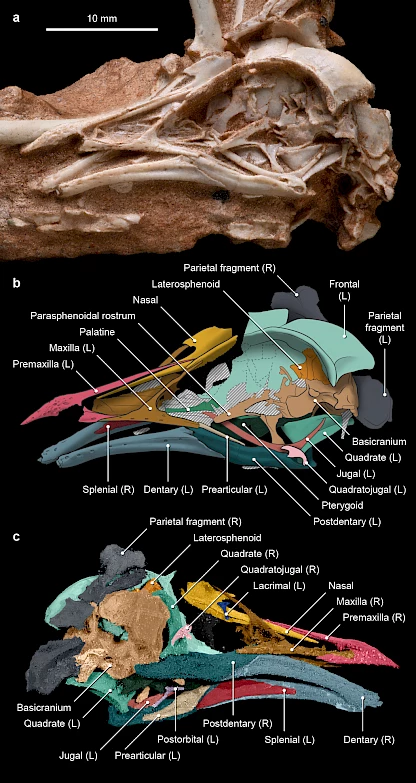Discovery of new rare fossil sheds light on evolution of bird brains and skulls
This is one of the most spectacular discoveries ever made in palaeontology, enabling us to understand evolutionary processes and even the neuroanatomy that led to the origin of modern birds.
Ismar de Souza Carvalho, a researcher at the Geosciences Centre (CGEO) of the Faculty of Sciences and Technology of the University of Coimbra (FCTUC), is part of an international research team that has discovered a new and rare bird fossil - Navaornis hestiae - from the Late Cretaceous of Brazil, which sheds light on the evolution of the skull and brain of birds.
The scientific article ‘Cretaceous bird from Brazil informs the evolution of the avian skull and brain’, which has just been published in the journal Nature, details this amazing discovery.
According to Carvalho, who is also a researcher at the Institute of Geosciences at the Federal University of Rio de Janeiro, Brazil, the Navaornis hestiae fossil belongs to a group of extinct birds, the enantiornithes, that were common during the Mesozoic era - the age of the dinosaurs. It was found in rocks dating from 83.6 to 72.1 million years ago in the heartland of the state of São Paulo.
It is one of the most spectacular discoveries ever made in palaeontology. The name was chosen to honour the palaeontologist William Roberto Nava, director of the Museum of Palaeontology in Marília, who discovered the bird in Presidente Prudente,' says Izmar.
Not only does this fossil have a three-dimensional appearance, but it also provides evidence of the brain structure. Its skull and brain show morphological features that indicate evolutionary transformations between the most primitive birds (such as Archaeopteryx) and today's birds," explains Ismar Carvalho, adding that the Navaornis skull has no teeth, has large eyes and is strikingly similar to that of modern birds.
"This discovery helps us to understand how and when the evolutionary processes, including neuroanatomy, that led to the origin of modern birds took place. The discovery of Navaornis is a milestone for Brazilian palaeontology. In addition to its exceptional preservation, it highlights the importance of birds that existed shortly after the separation of the continents that formed Gondwana, allowing us to trace the evolutionary link between the earliest birds and those of today," says the co-author.
The scientific article is by Luis M. Chiappe, Guillermo Navalón, Agustín G. Martinelli, Ismar de Souza Carvalho, Rodrigo Miloni Santucci, Yun-Hsin Wu1 and Daniel J. Field.



